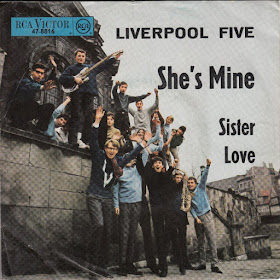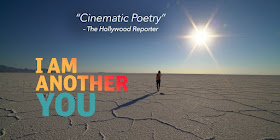With a band name that made me confuse them with the Liverpool Echo, I never gave this outfit previous consideration until “Sister Love” recently caught my ears. The song offered not only a delightful mélange of beat, folk and garage, but also a palpable sense of soul. The inherent soulfulness of the song made sense when I discovered it was written by Curtis Mayfield. Arrive (their American debut album) remarkably features “Sister Love” plus two more compositions from Curtis Mayfield. (Interestingly, 2008’s Best of the Liverpool Five collection from Sundazed does not include any of the Mayfield material.) "That's What Love Will Do (To You)" is the second Mayfield song and presents them in a refined Searchers mode. "Hey Little Girl" is a swaying dance floor number that Mayfield first handed off to Major Lance between his big hits "The Monkey Time" and "Um, Um, Um, Um, Um, Um." The Liverpool Five's version features some standout backing vocals-especially when their voices converge on the forefront to proclaim, "Let's Get Together." Action-packed between the Mayfield compositions are some stompers that rave-up and nose dive somewhere between the Count Five and the Yardbirds. The LP5 drape fuzz all over the slow burning " I Just Can’t Believe It" written by Barry DeVorzon (of “Nadia’s Theme," “Theme From S.W.A.T.” and Valiant Records fame) and convey a "she's gone" lament with determined resolve in reaction to the crushing blow.
While the shopworn narrative is that the tough British Invasion bands reintroduced the blues back to America, what is often taken for granted (here in the U.S.) is the monumental influence of American soul music had on the development of British Beat music (along with skiffle, the Shadows. music hall and folk). The band’s trajectory was just as adventurous as their song selection as they were mostly from London before honing their sound in Germany (like that band that was actually from Liverpool). They even performed at the 1964 Tokyo Olympics and played in the Philippines before sharing the Hollywood Bowl stage with the Beach Boys & the Byrds at the Beach Boys’ Summer Spectacular in 1965. The group somehow ended up based in Spokane, WA where they reached the mountain top of the ultra-competitive Pacific Northwest scene. Thanks in part to Curtis Mayfield, it's now hard to overlook this British Invasion band and their well-traveled sound.







